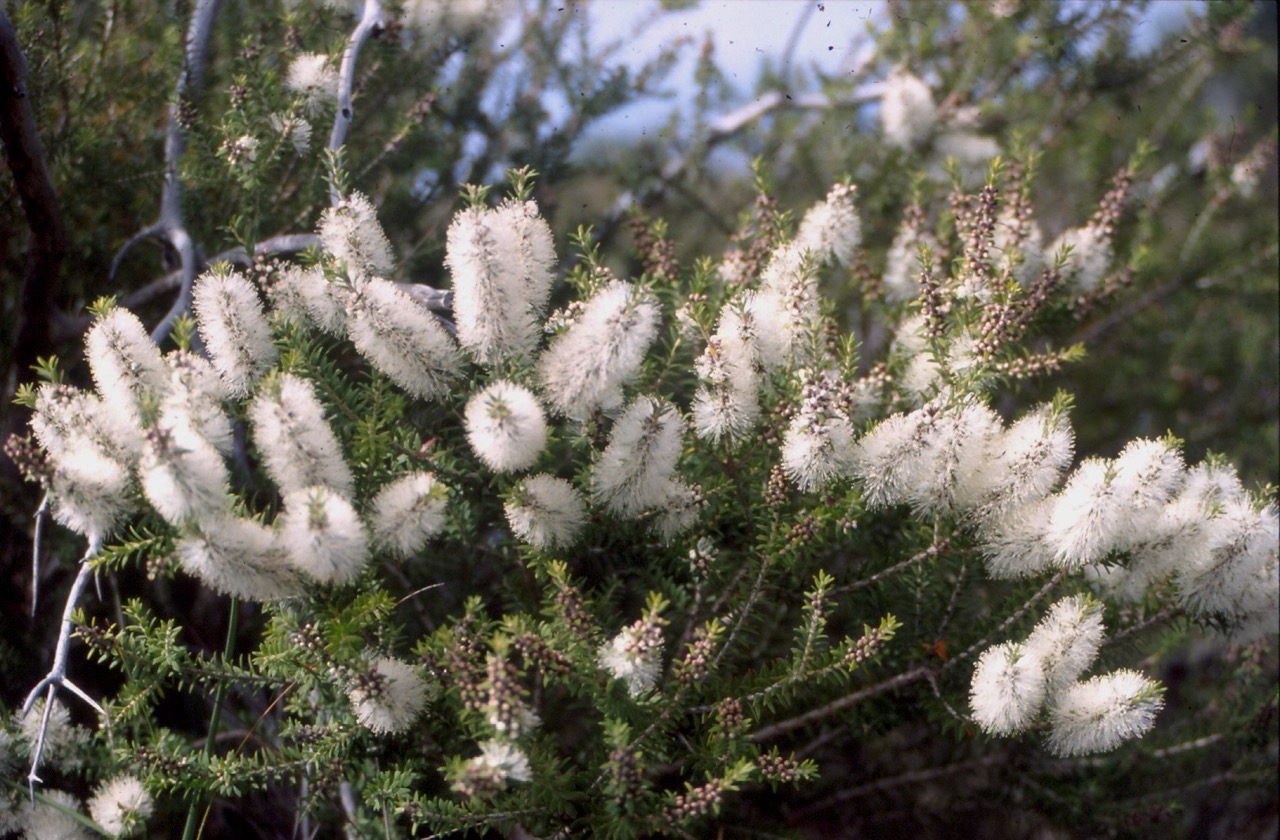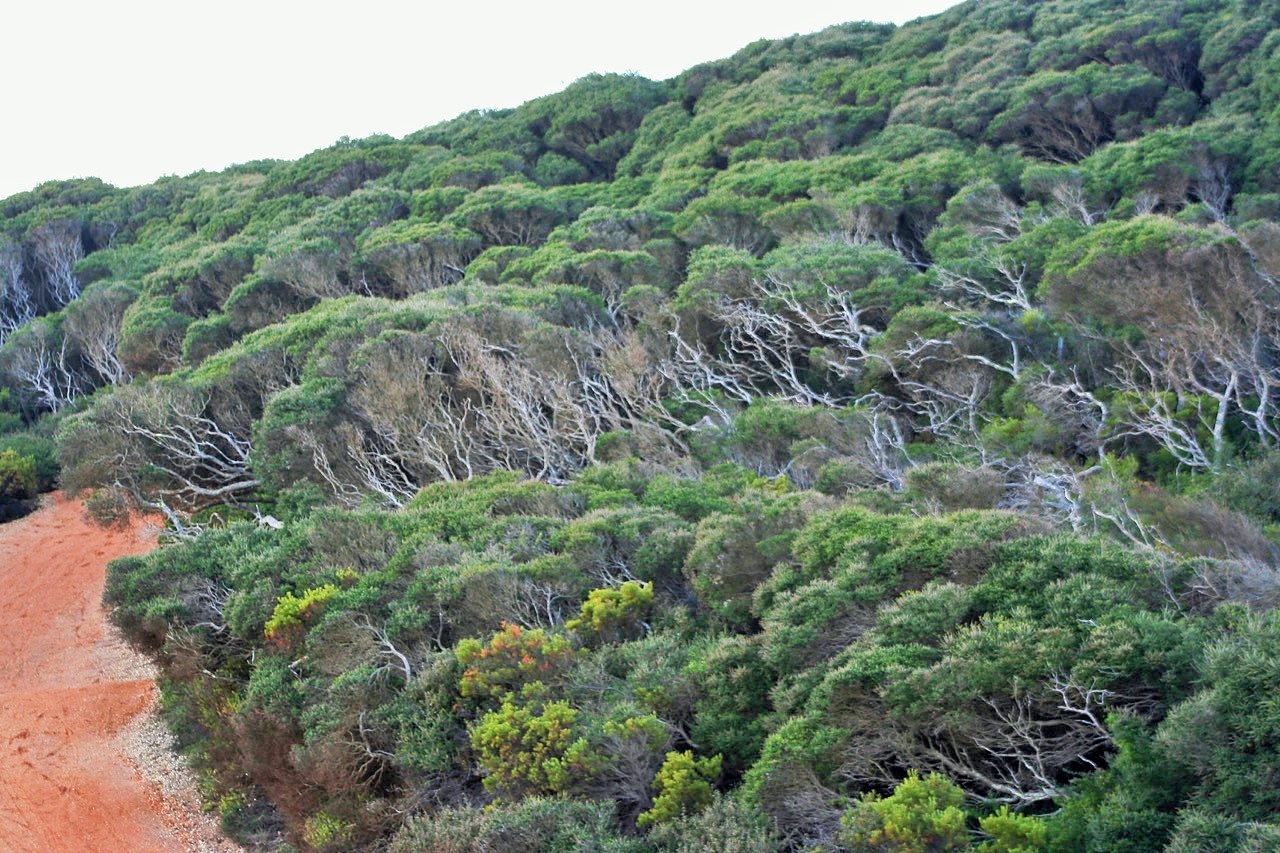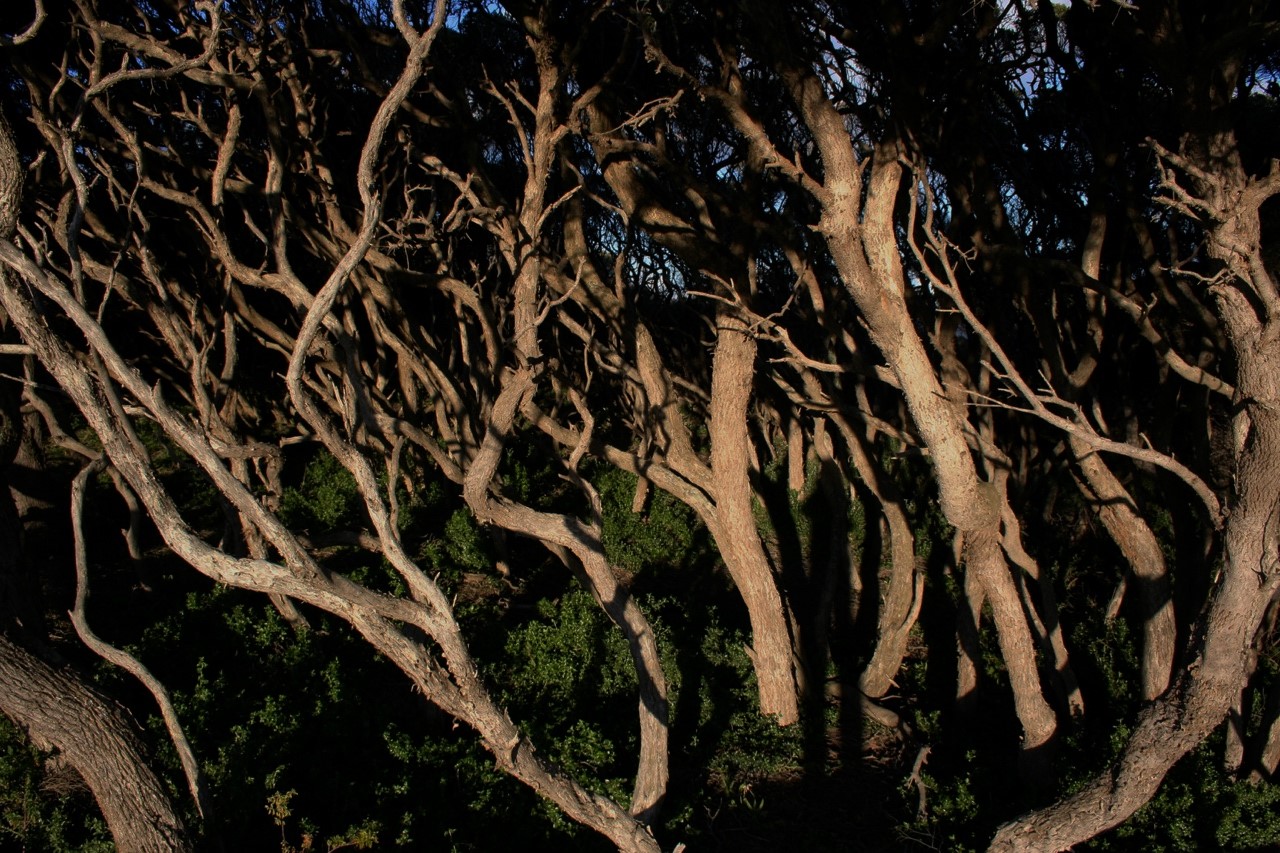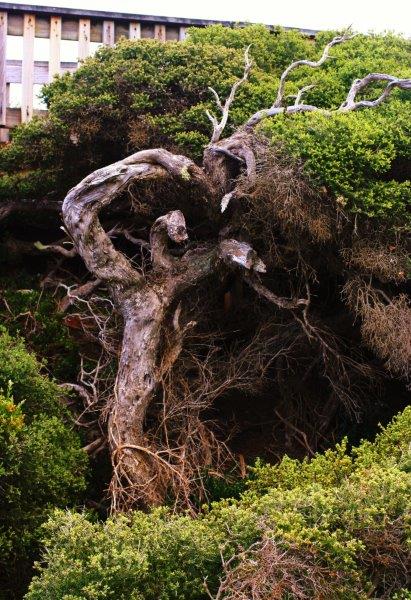



Moonah is a long-lived dominant feature of limestone soils growing at the back of sand dunes and on the coastal cliff tops. Along our coastline it is often seen growing interchangeably with coastal heath. Whilst heathland species dominant the poorer, sandy or shallow soils, Moonah dominates the limestone clays (marl) that in places forms an 'enchanted' Coastal Woodland. Its ability to withstand frontline coastal winds, poor soils, tolerant of long, dry summer conditions, and produce a high abundance of nectar for birds when it flowers in summer underscores its role as an ecologically keystone species along cliff tops. Its form can vary from a stunted low-growing shrub that is less than a metre high in exposed conditions to a tree up to 20m in height when conditions are suitable.
Foliage is alternately arranged on branches and the leaves are small, linear and narrowly elliptic.
Highly perfumed flowers are formed in a bottle-brush arrangement on new growth and are white. They are an important source of food for a range of birds, animals and insects during summer when most other things have finished flowering.
Seed capsules are retained on older branches.
Indigenous uses as provided by the Wathaurung Aboriginal Corporation: A sacred plant to Wadawurrung women. It has mythological and ceremonial importance.
Both sides of the leaf are one colour